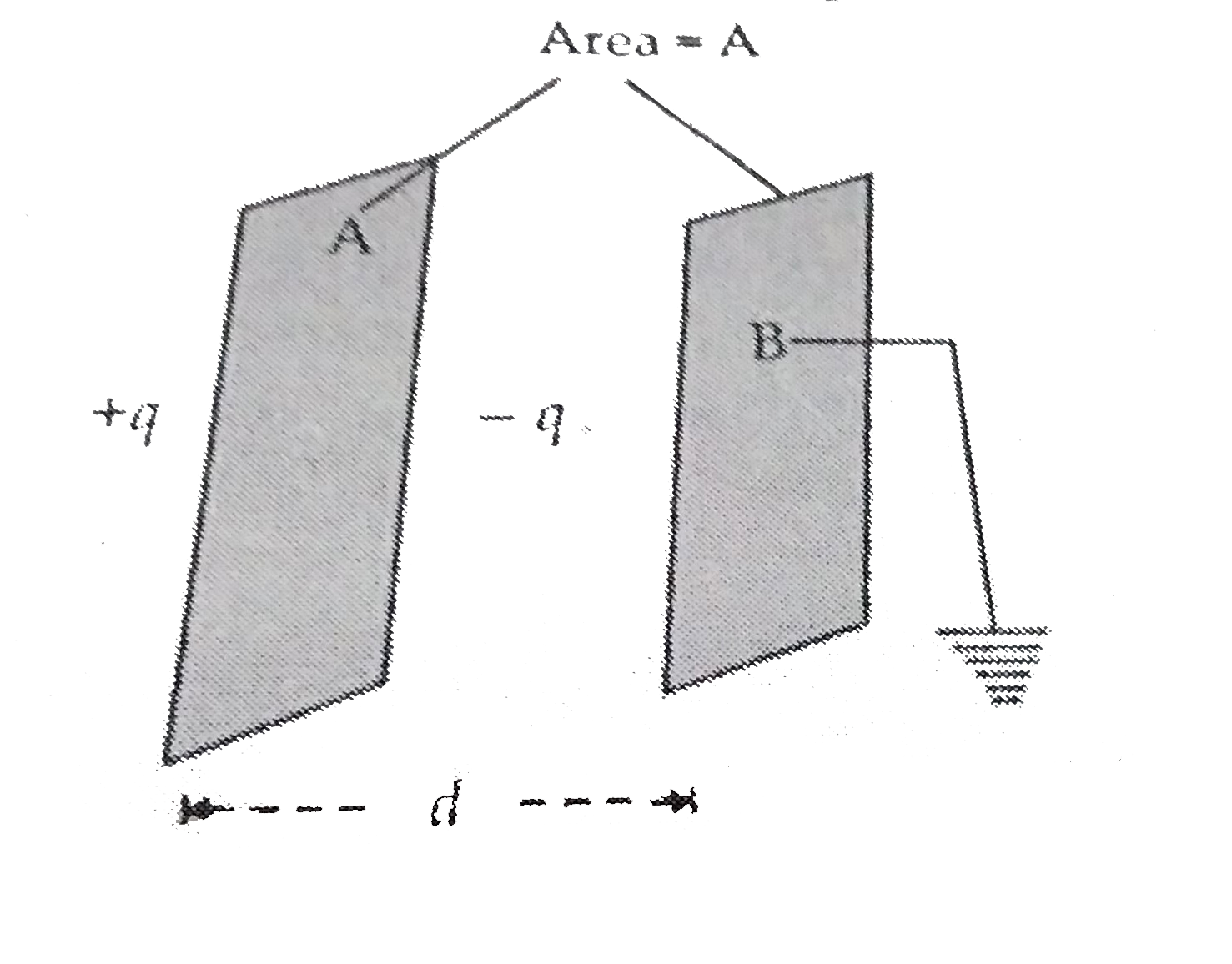(a) Obtain the expression for the potential due to a point charge.
(b) Use the above expression to show that the potential, due to an electric dipole (length 2a), varies as the inverse square' of the distance r of the 'field point' from the centre of the dipole for r>a.
Video Solution
Text Solution
(a) Potential at a point B defined as the amount of work done in bringing a unit positive charge from ∞ to that point.

Consider a charge q0 to brought from ∞ to point P.
Small amount of work done in moving the charge from A to B.
dw=→F.−→dx=q0→E.−→dx
=q.E.dxcos180∘=−q0E.dx
Total amount of work done to bring it from ∞ to P
W=−∫q0Edx=−∫r∞q014π∈0qx2dx=−qq04π∈0.r∫∞x−2dx
=−qq04π∈0[−1x]r∞=qq04π∈0[1r−1∞]
Now, V=Wq0=14π∈0qr.
(b) If charge + q is given to plate A, then charge -q is induced on the left face of plate B and charge +q on its right face. When plate B is earthed, the charge + q on its right face flows to earth. Due to charge The electric field between the two plates is related to the potential gradient as
E=dVdr (in magnitude)
Between the two parallel plates, the electric field is uniform and perpendicular to the plates. Therefore, if V is potential difference between two plates, then
E=Vd for uniform field(dVdr=Vd)
or V=Ed
If σ is surface charge density of the plates, of the plates, then the electric field between the two plates is given by
E=σε0
where ε0 is absolute permittivity of the free space (If it assumed that medium between the plates is carcumm or air).
In the equation, substituting for E, we have
V=σε0d
If A is the area of each plate, the
σ=qA
∴V=qε0dA
If C is the capacitance of the parallel plate capacitor, then
C=qqd/ε0A
or C=ε0Ad.

|
Similar Questions
Knowledge Check
Electric field intensity (E) due to an electric dipole varies with distance (r) of the point from the center of dipole as :
AE∝1rBE∝1r4CE∝1r2DE∝1r3The electric field and the potential of an electric dipole vary with distance r as
A1r and 1r2B1r2 and 1rC1r2 and 1r3D1r3 and 1r2The electric field and the potential of an electric dipole vary with distance 'r' as
A1rand1r2B1r2and1rC1r2and1r3D1r3and1r2
Show on a plot the nature of variation of the (i) electric field (E), and (ii) potential (V) of a small electric dipole with the distance (r) of the field point from the centre of the dipole.
View SolutionShow on a plate the nature of variation of the (i) Electric field (ii) potenital (V), of a (small) electric dipole with the distance (r) of the filed point from the centre of the dipole.
View SolutionElectric potential on dipole axis varies inversely as ……….. Of distance of point from the center of electric dipole.
View SolutionThe electric potential at a point on the axis of an electric dipole depends on the distance r of the point from the dipole as
View SolutionThe value of electric potential at any point due to any electric dipole is
View Solution
